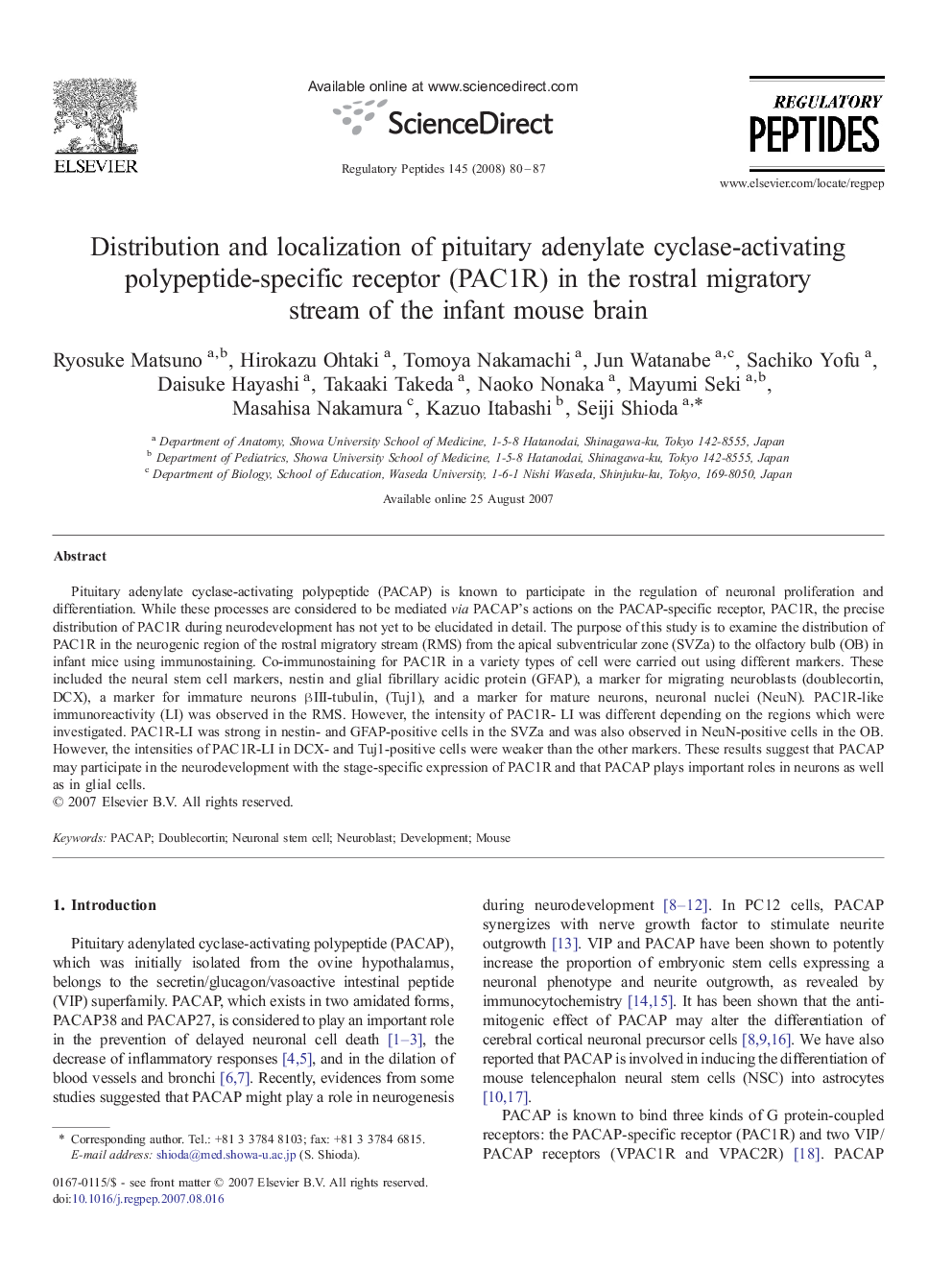| Article ID | Journal | Published Year | Pages | File Type |
|---|---|---|---|---|
| 2023325 | Regulatory Peptides | 2008 | 8 Pages |
Abstract
Pituitary adenylate cyclase-activating polypeptide (PACAP) is known to participate in the regulation of neuronal proliferation and differentiation. While these processes are considered to be mediated via PACAP's actions on the PACAP-specific receptor, PAC1R, the precise distribution of PAC1R during neurodevelopment has not yet to be elucidated in detail. The purpose of this study is to examine the distribution of PAC1R in the neurogenic region of the rostral migratory stream (RMS) from the apical subventricular zone (SVZa) to the olfactory bulb (OB) in infant mice using immunostaining. Co-immunostaining for PAC1R in a variety types of cell were carried out using different markers. These included the neural stem cell markers, nestin and glial fibrillary acidic protein (GFAP), a marker for migrating neuroblasts (doublecortin, DCX), a marker for immature neurons βIII-tubulin, (Tuj1), and a marker for mature neurons, neuronal nuclei (NeuN). PAC1R-like immunoreactivity (LI) was observed in the RMS. However, the intensity of PAC1R- LI was different depending on the regions which were investigated. PAC1R-LI was strong in nestin- and GFAP-positive cells in the SVZa and was also observed in NeuN-positive cells in the OB. However, the intensities of PAC1R-LI in DCX- and Tuj1-positive cells were weaker than the other markers. These results suggest that PACAP may participate in the neurodevelopment with the stage-specific expression of PAC1R and that PACAP plays important roles in neurons as well as in glial cells.
Related Topics
Life Sciences
Biochemistry, Genetics and Molecular Biology
Biochemistry
Authors
Ryosuke Matsuno, Hirokazu Ohtaki, Tomoya Nakamachi, Jun Watanabe, Sachiko Yofu, Daisuke Hayashi, Takaaki Takeda, Naoko Nonaka, Mayumi Seki, Masahisa Nakamura, Kazuo Itabashi, Seiji Shioda,
